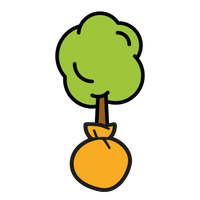When should I plant Oleaster hedging?
The best time to plant Oleaster hedging is from late Autumn through to late Winter.
How far apart do you plant Oleaster plants?
If you are planting a single row of Oleaster hedging, ensure you plant about 2-3 plants per metre. This will give you the most dense, bushy hedge.
How to plant your Oleaster:
Dig a hole that is two/three times as deep and wide as the root ball of the plant. For Oleaster, the wider the hole, the better.
Depending on the type of the soil, porosity (availability and movement of air/water in the soil) and fertility, it may be worthwhile mixing in a soil amendment to the soil that is removed to make the planting hole. For dense or poor-quality soils, mix in topsoil, and for soil that is very sandy, mix in some topsoil with peat moss and compost (this will help retain moisture).
Next, remove the plant from its container and gently loosen the roots that surround the surface of the root ball. Place the plant into the planting hole, ensuring it is straight, and then back-fill with the amended soil mixture. Press it down lightly as you go, to remove any air pockets.
Water the planting area thoroughly, and feel free to add a bit of root stimulator if you are wanting to boost the plant even further. To retain moisture and defeat weeds, feel free to add a 1-2" layer of chipped wood mulch/straw around the planting area.













